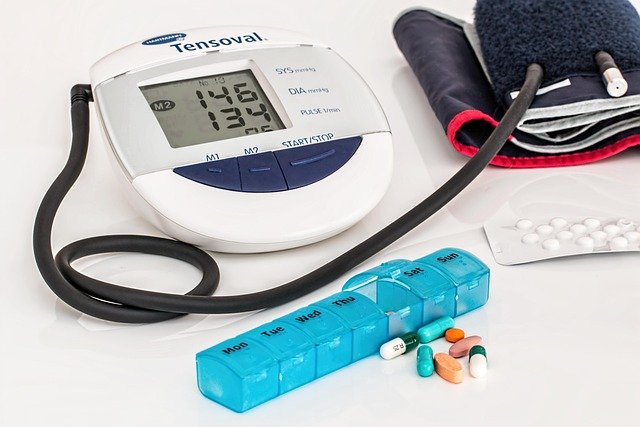Understanding Heart Attacks: Symptoms, Causes, and Prevention
A heart attack, also known as a myocardial infarction, is a serious medical emergency that occurs when blood flow to the heart is blocked, causing damage to the heart muscle. This life-threatening condition affects millions of people worldwide and requires immediate medical attention. In this article, we'll explore the key aspects of heart attacks, including their symptoms, causes, risk factors, and prevention strategies.

-
Upper body discomfort: Pain or discomfort in one or both arms, the back, neck, jaw, or stomach.
-
Shortness of breath: This can occur with or without chest discomfort.
-
Cold sweat, nausea, or lightheadedness: These symptoms may accompany other heart attack signs.
It’s important to note that women may experience different or less typical symptoms, such as fatigue, indigestion, or pain in the upper abdomen or back.
What causes a heart attack?
Heart attacks typically occur when one or more of the coronary arteries, which supply blood to the heart, become blocked. This blockage is often the result of a buildup of plaque, a substance composed of cholesterol, fat, and other materials. When plaque ruptures, it can form a blood clot that obstructs blood flow to the heart muscle.
Several factors contribute to the development of coronary artery disease and increase the risk of a heart attack:
-
Atherosclerosis: The gradual buildup of plaque in the arteries over time.
-
High blood pressure: Puts extra strain on the heart and blood vessels.
-
High cholesterol levels: Contributes to plaque formation in the arteries.
-
Smoking: Damages blood vessels and increases the risk of blood clots.
-
Obesity: Increases the likelihood of developing other risk factors.
-
Diabetes: Affects blood sugar levels and can damage blood vessels.
-
Lack of physical activity: Contributes to obesity and other risk factors.
-
Stress: Can lead to unhealthy behaviors and affect overall heart health.
How can you prevent a heart attack?
While some risk factors for heart attacks, such as age and family history, cannot be changed, many lifestyle modifications can significantly reduce your risk:
-
Maintain a healthy diet: Focus on fruits, vegetables, whole grains, lean proteins, and healthy fats.
-
Exercise regularly: Aim for at least 150 minutes of moderate-intensity aerobic activity per week.
-
Quit smoking: If you smoke, seek support to quit and avoid secondhand smoke.
-
Manage stress: Practice stress-reduction techniques like meditation, yoga, or deep breathing exercises.
-
Control blood pressure and cholesterol: Work with your healthcare provider to monitor and manage these levels.
-
Maintain a healthy weight: Losing excess weight can reduce strain on your heart.
-
Limit alcohol consumption: If you drink, do so in moderation.
-
Get regular check-ups: Visit your doctor for routine health screenings and to discuss your heart health.
What should you do if you suspect a heart attack?
If you or someone around you experiences symptoms of a heart attack, taking immediate action is critical:
-
Call emergency services: Don’t wait or try to drive yourself to the hospital. Emergency responders can begin treatment as soon as they arrive.
-
Chew and swallow an aspirin: If you’re not allergic to aspirin, taking one can help reduce blood clotting.
-
Stay calm and rest: Try to remain as calm as possible and sit or lie down while waiting for help.
-
Unlock the door: If you’re alone, unlock your door so emergency responders can enter.
-
Stop any activity: Avoid exerting yourself, as this can put additional strain on your heart.
Remember, every minute counts during a heart attack. The sooner you receive medical attention, the better your chances of survival and recovery.
How is a heart attack diagnosed and treated?
When a person arrives at the hospital with suspected heart attack symptoms, medical professionals will conduct various tests to confirm the diagnosis and determine the best course of treatment. These may include:
-
Electrocardiogram (ECG): Measures the heart’s electrical activity.
-
Blood tests: Check for proteins that indicate heart muscle damage.
-
Coronary angiography: Uses X-rays to visualize the coronary arteries and identify blockages.
Treatment for a heart attack aims to restore blood flow to the heart and prevent further damage. Options may include:
-
Medications: Such as clot-busting drugs, blood thinners, or pain relievers.
-
Coronary angioplasty: A procedure to open blocked arteries using a balloon catheter.
-
Stent placement: Inserting a small mesh tube to keep the artery open after angioplasty.
-
Coronary artery bypass surgery: Creating new routes for blood to flow around blocked arteries.
After treatment, patients typically undergo cardiac rehabilitation to improve their heart health and reduce the risk of future heart problems.
Understanding heart attacks, their symptoms, causes, and prevention strategies is crucial for maintaining good heart health. By recognizing the signs of a heart attack and taking steps to reduce your risk factors, you can protect your heart and potentially save your life or the life of someone around you. Remember to consult with your healthcare provider for personalized advice on maintaining a healthy heart and managing any existing risk factors.
This article is for informational purposes only and should not be considered medical advice. Please consult a qualified healthcare professional for personalized guidance and treatment.






